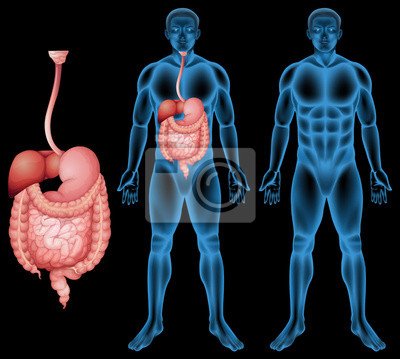Sex and Age Implicated in Autism-Related Diagnoses! A neuroscientist demystifies why findings are critical for precise ASD diagnoses
A new study by Stanford neuroscientists found that sex and age are strongly tied to which diagnoses tend to co-occur with Autism Spectrum Disorders (ASD). It is widely known that individuals diagnosed with ASD tend to carry a slew of other diagnoses as well. Much of ASD research tends to be focused on the causes of ASD itself, which alludes scientists to date, but this is not particularly helpful for families and providers who are trying to tease apart if their loved one carries an ASD diagnosis, another medical diagnosis, or something else entirely.
All About Sex
- At least for humans, this most basic of acts is anything but basic. As the pioneering sex researcher Alfred Kinsey put it, the only universal in human sexuality is variability itself. Within the universe of intimacy and pleasure that sex affords, however, there's a lot of room for error. From the behavior itself to our sexual identifications and associations, sex never fails to be a provocative topic. Most people are affected by sexual problems at some point in their lives and safety of the body and mind is always a concern. Though the global jury may remain hung over sex's moral and political implications, we can all come to at least one consensus: It's why we're alive today and it's the first thing future generations depend on.
What Is Autism?
A pervasive developmental disorder, autism affects information processing in multiple ways. Many people with autism have difficulties with social interactions and communication, sensory deficits, and poor motor coordination. People with autism often have restricted interests and engage in repetitive behaviors.
Because autism's symptoms vary greatly, the condition is said to exist on a spectrum, referred to as Autism Spectrum Disorder. (Asperger's Syndrome is a condition that is considered to be "high functioning" autism.) Some people with autism have low intelligence while others are quite intelligent.
Autism usually manifests by age two. It affects far more males than females. The frequency of diagnosis has surged over the past 20 years; it is not clear whether the incidence is truly increasing, whether experts are more alert to it, or whether the diagnosis has shifted to include lesser degrees of impairment. No one knows for sure what causes autism, but numerous studies link it to advanced maternal and/or paternal age at conception increasing the risk of direct genetic mutations or of factors that influence the expression of genes in he developing brain.
Some research suggests that autism reflects an "extreme male brain," because people with the condition often have an obsession with details and systematizing but are low on empathic ability. Reports implicating mercury-containing vaccines have proved baseless, although there is some evidence that environmental toxins may play a role. There is no cure for autism, but some symptoms may ease over the years.

Source pixabay
In the study, published in the May 2017 volume of Autism Research, the researchers compared data from 4,790 people with Autism Spectrum Disorder and a whopping 1,842,575 without ASD using the Stanford Translational Research Integrated Database Environment (STRIDE), an online database of all cases treated at Stanford University Medical Center from 1995 to the present. It is the largest study to date comparing comorbidities (co-occuring disorders) in ASD and non-ASD populations.
Environment
- Driving cars, farming wind turbines, working in shared spaces, and living in high-rise apartments are all relatively new experiences for the human species, but they demonstrate that we are particularly good at adapting to a diverse range of landscapes. Environmental psychology, which may encompass ecopsychology and conservation psychology, explores the relationship between humans and the world and how physical spaces influence the way we feel, think, and interact within both natural and built landscapes in our environment. Specialists in the field investigate everything from stressful designs in urban spaces that may influence human performance or even criminal behavior, to the therapeutic effects of the outdoors on children and adults alike. Environmental psychologists often work with other professionals in the areas of environmental science, city planning, architecture and landscape design.
Findings indicate that epilepsy, attention deficit hyperactivity disorder, central nervous system disorders, and cranial abnormalities tended to occur at surprisingly large frequency in males (over 19% of the male ASD population endorsed), in females (over 15% of the female ASD population endorsed), and in children and adolescents with ASD of both sexes. Although the prevalence of these co-occuring disorders declined people aged, other disorders arose in their place. Older individuals with ASD (defined as over 35 years and above) were found to have increasing diagnoses of schizophrenia. Approximately 25% of adult males with ASD carry a schizophrenia diagnosis while only 7.7% of adult females with ASD also carry a schizophrenia diagnosis. Bowel disorders were also found to co-occur frequently in ASD in childhood and adulthood.
What Is attention ADHD?
- Attention-deficit/hyperactivity disorder is a neurobehavioral disorder characterized by a combination of inattentiveness, distractibility, hyperactivity, and impulsivity.
- Five to seven percent of children are diagnosed with this developmental disorder. Some simply cannot concentrate; others become disruptive, defiant and have trouble getting along with parents, peers, or teachers.
- ADHD is controversial. Is it a true disorder or a collection of naturally occurring behaviors that aren't tolerated in today’s high-demand world? Furthermore, there are competing theories about what, if anything, triggers ADHD in the brain, although executive functioning (attention, emotion regulation, and decision-making) is invariably affected. Up to 50 percent of children eventually outgrow the condition, but even if so, early developmental delays may create enduring learning problems.
- Experts disagree over whether treatment should be behavioral (training of attention, increased play, greater structure) or pharmacological (stimulants such as Ritalin and Adderall), although a combination of both may work best.
- Managing work, school, and household tasks can be very challenging for people with ADD and ADHD. Fortunately, those afflicted can learn coping skills to work around shortcomings and harness their talents — as many successful people with ADD and ADHD have done.

Source pixabay
Schizophrenia
- Schizophrenia is a disabling, chronic, and severe mental illness that affects more than 21 million people around the world. Symptoms include hearing internal voices, having false beliefs, disorganized thoughts and behavior, being emotionally flat, and having hallucinations. These symptoms may leave a person feeling fearful and withdrawn. Their disorganized behavior can be perceived as incomprehensible or frightening to others.
- People with schizophrenia may not make sense when they talk. They may sit for hours without moving or talking, or may seem like they are talking to themselves.
Understanding Child Development
The speedy physical and psychological changes that children undergo from birth through adolescence often leave parents wondering how best to care for them at each stage. PT's experts weigh in on such topics as birth order, gender, and the effects of parental behavior on child development.
Carefully examining how the results and implications of this study can assist in making more precise ASD diagnoses and in creating increasingly efficacious treatments for ASD across the lifespan. Kaustubh Supekar, a neuroscientist and the study’s first author, answered several questions in an interview about the implications of these findings.
SNB: How do you envision this work evaluating sex & age differences in comorbid conditions in ASD will contribute to the development of more precise diagnostic & treatment methods for ASD?
- KS: Diagnosis: More often than not, an individual may present with symptoms that are indicative of ASD, a comorbid condition, both or none. Our study findings provide insights into the likelihood of a condition co-occurring with ASD in a given age-range and gender grouping, and therefore have important implications for such differential diagnosis
Understanding Gender
In the old days, it seemed simple: Men hunted and women bore and raised kids. Then we moved out of caves, invented gender studies, and learned a thing or two about genetics. Now nothing is clear cut. While social and biological analyses of gender offend some, they have freed others to finally feel comfortable in their own skin. Whether you're gay or straight, transgender or cisgender, or just curious about why men and women treat each other the way they do, there's something in here for you.
KS: Treatment: Comorbidity patterns reported by our study provide a comprehensive mapping of conditions that are likely to share etiology in males, females, or both, as a function of age. This map has the potential to not only provide better understanding of the pathophysiology underlying ASD but also inform drug repurposing. For example, our findings suggest that antiepileptic drugs could be more effectively administered to individuals with ASD, particularly children and adolescents with the disorder.
All About understanding Empathy
- Empathy is the experience of understanding another person's condition from their perspective. You place yourself in their shoes and feel what they are feeling. Empathy is known to increase prosocial (helping) behaviors. While American culture might be socializing people into becoming more individualistic rather than empathic, research has uncovered the existence of "mirror neurons," which react to emotions expressed by others and then reproduce them.
SNB: Why is this work important for diagnosing medical professionals to be aware of?
- KS: Our findings call for a broad range of assessment instruments be made available to clinicians so that they are less likely to miss a diagnosis. For instance, based on our findings, an older male adult (age > 35 y.o.) receiving ASD treatment should also be screened for schizophrenia and the other way around. This would allow for more accurate diagnosis and better treatment.
SNB: How does this work directly impact families with concerns for their ASD (or suspected ASD) family member?
- KS: The results described in our manuscript have the potential to assist families with ASD to better assess disease complexity and allocation of resources based on the expected comorbidity burden. Additionally, it will enable better disease management with proactive screening and subsequent treatment of highly-probable comorbid conditions.
manegament Great Leaders
As leadership expert Warren Bennis once stated, "leadership is the capacity to translate vision into reality." Great leaders possess dazzling social intelligence, a zest for change, and above all, a vision that allows them to set their sights on the things that truly merit attention. Not a bad skill set for the rest of us, either.
It is the job of leaders to develop a vision—establish what matters and articulate why—set direction, and inspire others. Recent research on the skills leaders need establishes the increasing importance of inner resources of the psyche such as self-awareness and self-mastery.
If you are interested in contributing to this type of research, the Stanford Cognitive and Systems Neuroscience Laboratory at Stanford University is recruiting participants between 7 and 12 years old (both typically developing and with ASD or ADHD). You can learn more about their studies here:
Understanding Cognition
- Quite simply, cognition refers to thinking. There are the obvious applications of conscious reasoning—doing taxes, playing chess, deconstructing Macbeth—but thought takes many subtler forms, such as interpreting sensory input, guiding physical actions, and empathizing with others. The old metaphor for human cognition was the computer—a logical information-processing machine. (You can’t spell cognition without “cog.”) But while some of our thoughts may be binary, there's a lot more to our 'wetware' than 0's and 1's.
Neuroscience
- The human brain has been called the most complex object in the known universe, and in many ways it's the final frontier of science. A hundred billion neurons, close to a quadrillion connections between them, and we don't even fully understand a single cell.
- Neuroscience aims to understand how a person arises out of a clump of squishy matter. It's where psychology meets biology. And with new tools at our disposal—computer simulations, medical imaging—we double our knowledge every decade. Roll up your sleeves and poke around.
Source pixabay
References
- Supekar, K., Iyer, T., & Menon, V. (2017). The influence of sex and age on prevalence rates of comorbid conditions in autism. Autism Research.

